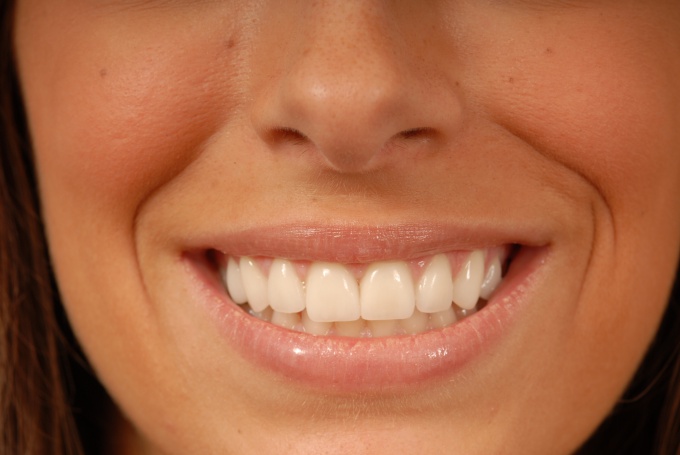Instruction
1
If the gap between the teeth was always
Most often, the diastema (that is, the gap between the front incisors) is hereditary. Rarely it is caused by bad habits (biting a pencil, etc.), a late change of primary teeth, partial edentulous (absence of one or group of teeth). If the rest of the bite of the patient is physiologically normal, the diastema is not an indication for treatment with braces. With smooth tooth row diastema in principle is not necessarily to eliminate.
For getting rid of diastemata and three (gaps between any teeth except the front incisors) are veneers - thin ceramic plates. We put on the surface of the teeth, veneers mask the gaps between and also cover the darkened enamel. Orthopedic method, however, has a significant disadvantage: for veneers, grind off a few millimeters of tooth enamel.
Unlike therapeutic method (or art restorations) to that natural enamel is fully preserved. The practitioner applies a special composite structure in those areas where it is necessary to increase the teeth.
Most often, the diastema (that is, the gap between the front incisors) is hereditary. Rarely it is caused by bad habits (biting a pencil, etc.), a late change of primary teeth, partial edentulous (absence of one or group of teeth). If the rest of the bite of the patient is physiologically normal, the diastema is not an indication for treatment with braces. With smooth tooth row diastema in principle is not necessarily to eliminate.
For getting rid of diastemata and three (gaps between any teeth except the front incisors) are veneers - thin ceramic plates. We put on the surface of the teeth, veneers mask the gaps between and also cover the darkened enamel. Orthopedic method, however, has a significant disadvantage: for veneers, grind off a few millimeters of tooth enamel.
Unlike therapeutic method (or art restorations) to that natural enamel is fully preserved. The practitioner applies a special composite structure in those areas where it is necessary to increase the teeth.
2
If the gap between the teeth appeared in adulthood
Suddenly appearing diastema and Trema may indicate gum disease. The weakening of the gums to such an extent that the teeth are noticeably moving away from each other - an occasion to refer to the periodontist. First you need to defeat the cause of the cracks and then deal with the consequence, one of the scenarios described above.
Suddenly appearing diastema and Trema may indicate gum disease. The weakening of the gums to such an extent that the teeth are noticeably moving away from each other - an occasion to refer to the periodontist. First you need to defeat the cause of the cracks and then deal with the consequence, one of the scenarios described above.
3
The diastema in children
Children of preschool age, the presence of Shcherbinka between the front incisors is a physiological norm. In this case, the diastema suggests that the jaw of a child grows normally, but the teeth remain the same. The gap between the cutters will close itself when the temporary teeth are replaced by permanent. If the diastema does not disappear a few years after the molars, it is an occasion to address to the orthodontist. Until adolescence when such a problem apply a removable plate with 13-14 years, put braces.
Children of preschool age, the presence of Shcherbinka between the front incisors is a physiological norm. In this case, the diastema suggests that the jaw of a child grows normally, but the teeth remain the same. The gap between the cutters will close itself when the temporary teeth are replaced by permanent. If the diastema does not disappear a few years after the molars, it is an occasion to address to the orthodontist. Until adolescence when such a problem apply a removable plate with 13-14 years, put braces.
Note
Some stars, for example Madonna did not hesitate to the presence of diastema. The flaw did not put the pop icon to conquer the musical Olympus. So before you decide on an expensive treatment, think about the teeth if the reason of your dissatisfaction of their appearance?
